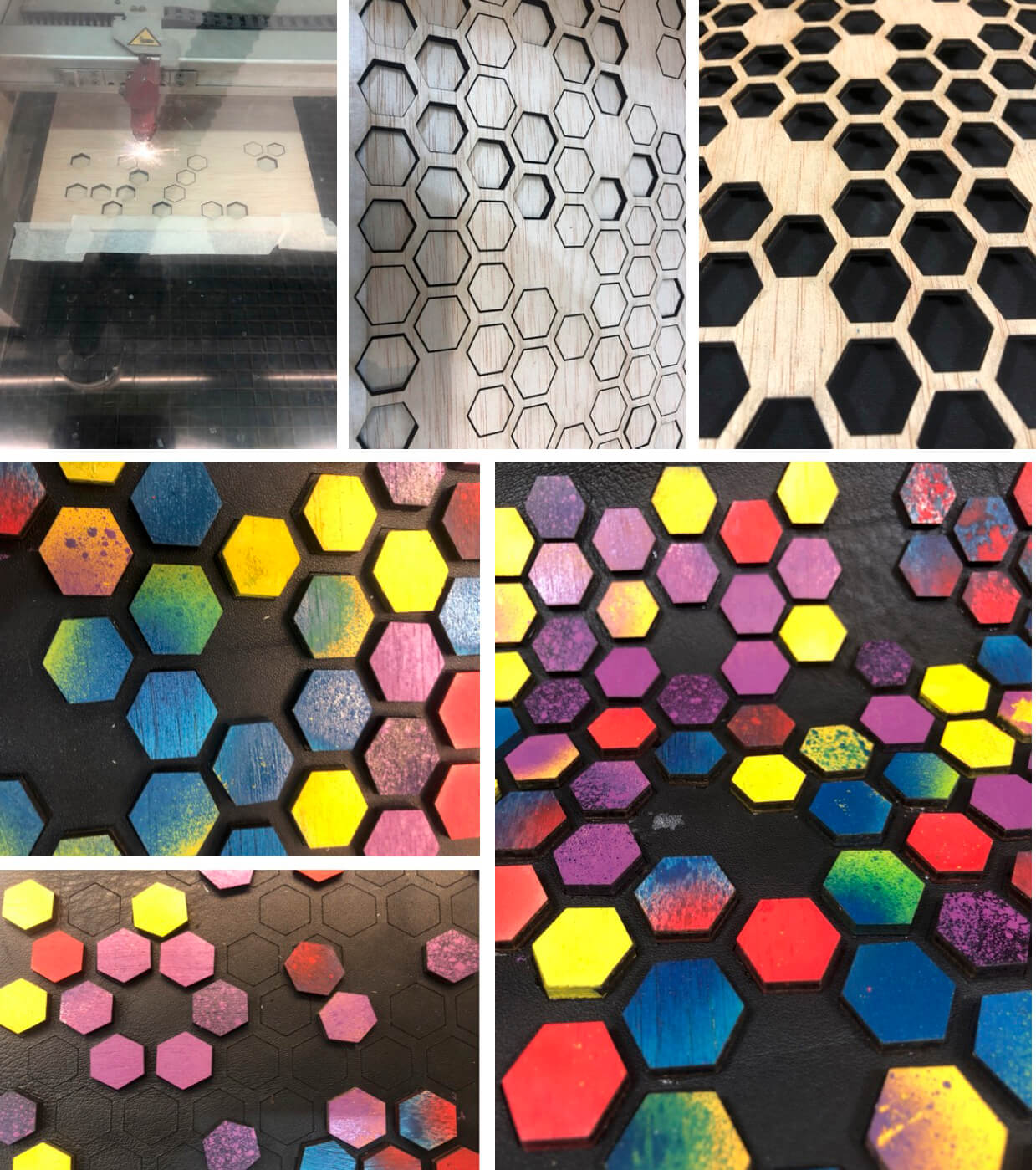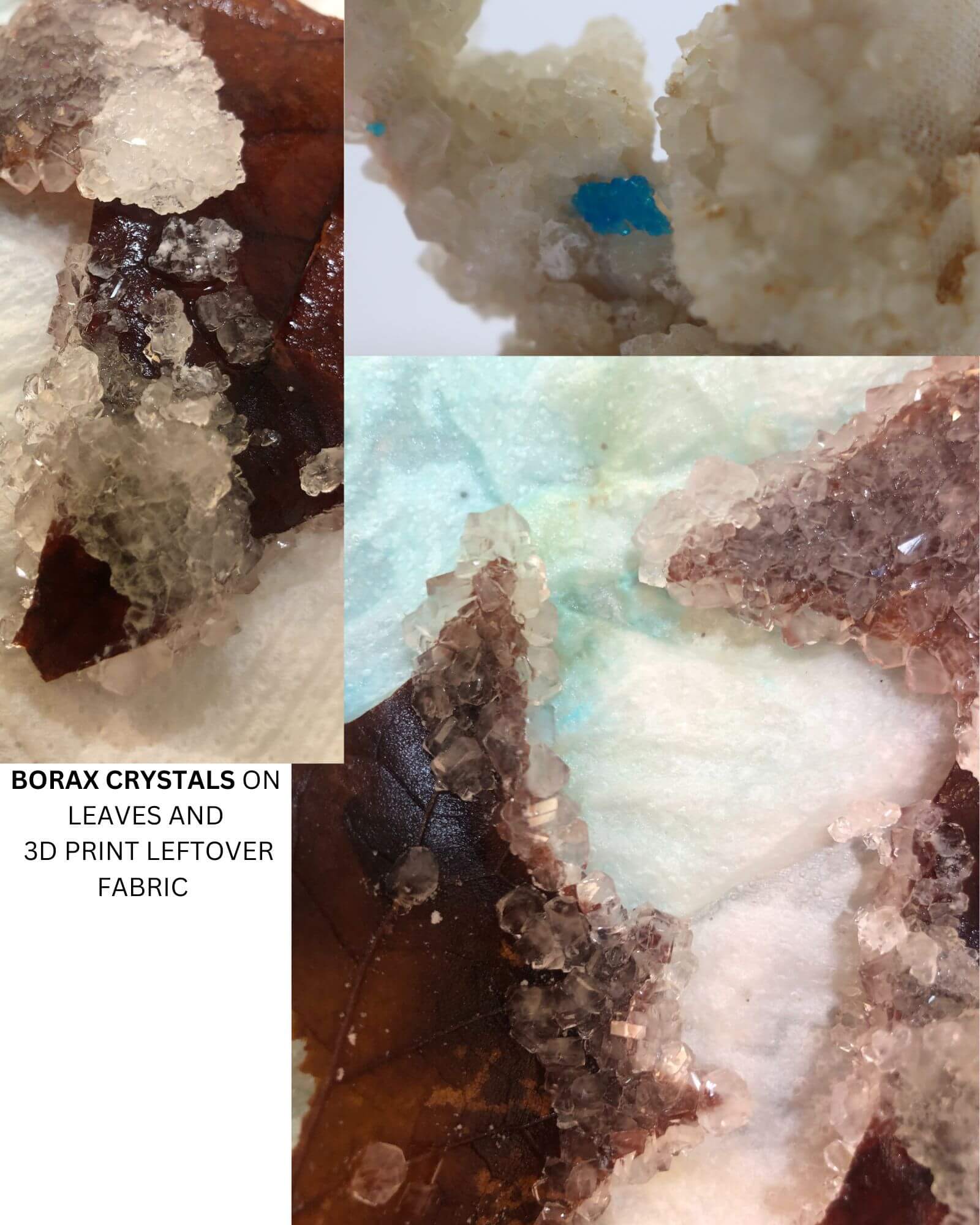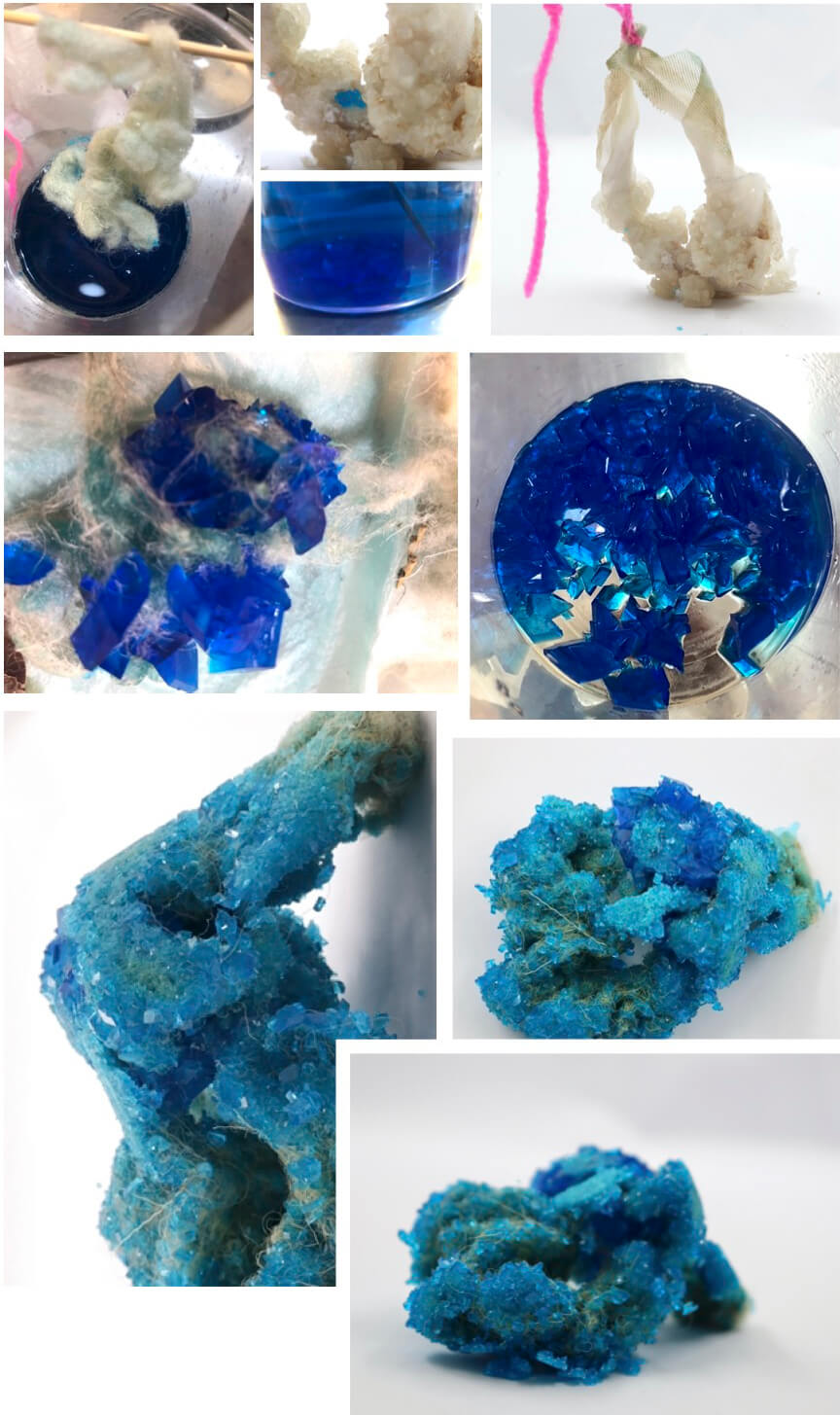9. Textile Scaffold¶
In this week's class, we focused on the technical textile applications, composites, biocomposites, crystallization, fabric formwork & concrete or plaster Casting and wood + textile composite
Materials that could be used: - Bio Resin and Resin - Borax, Rochelle salt, Potasium sodium, Epsom Salt, Sugar, - Concrete and Plaster - Veneer Wood - Fabric - White Glue - Vacuum bags or vacuum machine
Lecture Notes
Composites: materials produced from two or more constituent materials. They consist of two or more distict phases, bonded together.
Engineered materials include: - reinforced concrete and masonry - composite wood(plywood) - reinforced plastics(fibre-reinforced polymer,or fiberglass) - ceramic matrix composites - metal matrix composites - other advanced composite materials
We need examples of materials which are less expensive, lighter, stronger or more durable when compared with common materials.
more information on the weekly lecture here
Research¶
Natural Fibers: 4 types are found in nature(only cellulose derived from plants) - collagen - cellulose - chitin - silk Types of natural Fibers - abaca - palm - sisal - flax - coconut coir - bambou - jute - cotton - hemp - kenaf
Combination of these fibers with thermo formable Matrix: - Polylactic acid PLA, biobased, (180 C) - Polycarbolactone PCL, synthetic but biodegradable (60 C) - Animal glue, tree resin or wax(40-50 C)
Setting Matrix Examples: - Epoxy bio(50%) 20 min to one day or biobased polyester(not yet available) - Gelatine/starch based bioplastic, 1-5 days or Casein glue or Tapioca - Mycelium, 1-3 months
References & Inspiration¶
Some inspirational projects

Tools¶
- Rhino 7
- Lasercut
- CNC milling
CNC Milling¶
Wooden Textile¶
I worked on Rhino to test the hexagon design I made from computational couture week
Prepared the file to be ready to lasercut
Steps - Adjust the measurments for the laser cut machine - Adjust the settings for a 3mm plywood and laser cut - Adjust the settings for leather and engrave the hexagons - Take out the pieces - paint them - Glue on leather fabric

Crystallization¶
Crystallization is a process in which materials solidify from a liquid or solution and precipitate. the crystal's constituent atoms, molecules or ions are arranged in an orderly repeating pattern, extending in all three spatial dimensions
for more information from the textile scaffold lecture, slides 121-201 [here] (https://vimeo.com/889194379/d2502c7a91?share=copy)
Crystallazation Proccess¶
There are many types of crystals that I would love to explore in the future. For these assignment, I worked with:
-
Borax Description: Naturally occurring compound Laundry booster Soft crystals Dissolve in hot water
-
copper sulphate Description: copper sulfate (CuSO4) > sulfate pentahydrate (CuS04 . 5H20) vivid blue diamond-shaped crystals Temperature around 80°C Harmful - Protect your skin and eyes!
Example 1- Borax¶
Ingredients
- 150g Borax
- 400 ml Water
Tools
- Digital scale
- Pot/Vessel glass
- Spoon
- Object/surface to add the crystals
- Stovetop
- Thermometer
- Lid, Aluminum foil or Fabric
- Paper coffee filter
Steps
- Measure the ingredients depending on the pot you are going to use, calculate the water you will need to do the equivalance.
- Heat the water until to 80ºC or 90ºC.
- Mix in the mineral, until it dissolves completely.
- Optional: Add the pigment in the solution to get colour cyrsitals.
- Strain the solution with the coffee filter.
- Pour it into a container.
- Suspend your object in the solution with a thread. There must be space between the object and the pot to get the crystals grow.
- Cover the container with the lid to keep the heat from excaping too quickly.
- Put the container in a dark place and do not move. Wait for crystals to grow (8 hours aporx.)
- Take out the object when it's already crystalized and let it dry.
-
For the crystals on leaves I let them in the container for 24hours.They didn't stay on the object cause it was too fragile
-
For the crystals on 3D printed leftover fabric I left the crystals for 3 days in the container and they started to get moldy

Example 2-Copper Sulphate¶
Ingredients
200g of copper 300ml of water Piece of Wool
Tools
- Digital scale
- Pot/Vessel glass
- Spoon
- Object/surface to add the crystals
- Stovetop
- Thermometer
- Lid, Aluminum foil or Fabric
- Paper coffee filter
Steps
It follows the same proccess as with Borax
First test - I left the object in the container for 24h and I was really happy with the crystal formation.
Second test
- I then reused the leftover water and added copper in the remaining water and left the object in the container for 2 days
